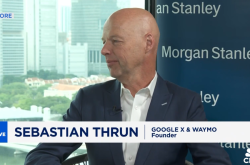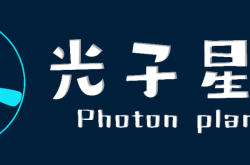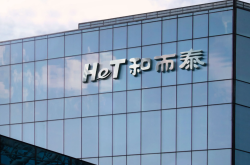AI’s ‘Nuclear’ Transformation: Unveiled in Quarterly Reports of Leading Firms
![]() 11/24 2025
11/24 2025
![]() 426
426

AI's far-reaching business transformation transcends mere advertising.
By BlueDeep Business, Jian Fan
Amid the fierce competition over large language models, a quieter yet significant shift is unfolding in financial reports: AI has evolved from a mere narrative to a driving force reshaping corporate revenue structures and profit margins.
Adobe’s latest financial report highlights a 12% year-on-year increase in digital media revenue, with steady growth in Creative Cloud subscribers. During the earnings call, CEO Shantanu Narayen repeatedly emphasized that AI features have become pivotal in user subscriptions and retention.
Similarly, language learning platform Duolingo achieved stable profitability after fully integrating AI capabilities, with cumulative revenue in the first three quarters surpassing its total for the previous year. Its paid user base grew by 38% year-on-year, proving AI’s monetization potential in consumer education.
In China, AI commercialization is no longer a distant dream.
Recently, NetEase Youdao released its financial report: net revenue reached RMB 1.63 billion, with an operating profit of RMB 28.3 million, marking its fifth consecutive quarter of profitability. For the first three quarters of 2025, cumulative operating profit surged nearly 150% year-on-year.
Behind these figures lies a silent yet profound transformation—Youdao is gradually shedding its label as a mere “education” company and evolving into a tech enterprise powered by AI. Its traditional online course business has been streamlined, while AI-driven “learning + advertising” dual engines now drive Youdao’s new narrative.
From financial reports at the forefront of commercialization, we can observe AI’s comprehensive impact on operations.
Revenue Structure Reversal: Advertising Takes the Lead, Powered by AI
If NetEase Youdao was still branded as an “edtech company” in 2022-2023, by 2025, it has undergone a “core transformation,” emerging as a quintessential AI firm.
The most notable sign of this transition is not mere business adjustments but AI’s role in reshaping all operations and quietly rewriting the revenue structure.
Reviewing third-quarter performance, Youdao’s net revenue reached RMB 1.63 billion, up 3.6% year-on-year. More intriguing is the profound shift in its revenue mix: online marketing revenue soared by 51.1% year-on-year to RMB 740 million, accounting for 45% of total revenue—surpassing learning services for the first time to become the company’s largest single-quarter revenue source.
This structural reversal is no coincidence. Online marketing’s revenue share has remained above 40% for the past two quarters, signaling sustained growth momentum. The driving force behind this change is AI.
Youdao CEO Zhou Feng explicitly attributed the growth to an “AI-native” strategy during the earnings call.
Historically, AI primarily served as a tool to enhance product efficiency or user experience, acting as a supplementary enabler. Today, AI has evolved into the core value proposition of businesses.
In online marketing, AI has transitioned from a backend technology to a frontline growth engine. The 51.1% surge was primarily driven by AI’s deep integration into ad matching, delivery optimization, and performance enhancement.
In learning services, AI is no longer just an assistant for grading assignments or recommending exercises but the foundation of a new AI subscription service model. Users are willing to pay for smarter, personalized AI learning experiences. AI subscription revenue doubled in six quarters, approaching RMB 100 million, with gradual commercial validation. For smart hardware, AI large models have become the product’s “brain” and main selling point, boosting product value and gross margins.
The “AI-ization” of business operations is reflected in solid financial results. In Q3, Youdao’s operating profit reached RMB 28.3 million, marking five consecutive quarters of profitability. Cumulative operating profit for the first three quarters of 2025 rose 149.2% year-on-year to RMB 161 million. Meanwhile, operating cash flow outflow narrowed by 31.4% year-on-year, demonstrating strong internal operational efficiency and cost control.
Management expressed confidence in achieving “rapid improvement in full-year operating profit and reaching annual operating cash flow break-even” during the earnings call. This indicates that the “AI-native” strategy has not only fueled growth for NetEase Youdao but also fostered a healthier, more resilient business model.
“Three-Tiered Drive”: A New Paradigm for AI-Powered Advertising
As early as Q4 2022, Youdao’s online marketing revenue surpassed RMB 200 million for the first time; by Q3 this year, it reached RMB 740 million—a 2.7-fold increase in less than three years.
More notably, within Youdao, this sizable business is still deemed “just beginning.” Management explicitly stated, “2025 marks the first year of large-scale AI adoption in advertising. Our ad business is still in the early stages of growth.”
When AI is credited for the advertising business’s rapid growth, it’s essential to examine the underlying logic of this transformation.
A closer look reveals that Youdao’s AI advertising strategy is highly pragmatic. Its core logic follows a “point-to-line, line-to-surface” incremental evolution, reflecting typical internet product thinking—avoiding the pursuit of a “universal AI robot” and instead focusing on high-frequency, pain-point-ridden scenarios in advertising where AI can intervene effectively. This approach has created a series of precise, efficient “mechanical arms.”
iMagicBox addresses efficiency bottlenecks in creative asset generation; Youdao Ads tackles precision challenges in influencer-brand matching; and Xiaozhi AI Optimizer focuses on automated ad strategy refinement. Each tool targets a specific business pain point, ensuring AI capabilities are precisely embedded at critical nodes of the advertising workflow.
Building on these “points,” Youdao further enables each tool to “achieve closure,” meaning they no longer settle for solving isolated issues but can independently complete entire business tasks.

Take iMagicBox as an example: it has evolved from a simple asset generation tool into a full-fledged creative platform covering text-to-image, image-to-video, video dubbing, and digital human generation. Critically, the system can analyze the underlying logic of viral content to guide re-production, transforming ad optimization from an experience-driven “craft” into a data-driven “scientific process.”
Similarly, Youdao Ads has achieved a full-loop closure from KOL intelligent recommendations and comment sentiment analysis to competitive ad insights, upgrading fragmented, uncontrollable influencer marketing into a quantifiable, optimizable scientific delivery system.
As these independent “mechanical arms” mature, Youdao begins integrating them into a cohesive whole, constructing an automated intelligent advertising production line. This phase emphasizes connecting data and workflows across AI tools to create synergies.
Financial performance confirms the significant commercial value of this AI advertising ecosystem. Although Q3 gross margins stood at 25.4%, slightly down year-on-year but flat quarter-on-quarter (25.8% in Q2), this suggests AI is beginning to offset cost pressures from scaling operations.
Management stated that the current gross margin level reflects a strategic balance between maintaining financial health and pursuing long-term growth. Aggressively increasing AI adoption suggests the 25% margin may have bottomed out, with expectations for margins to rise as AI efficiency improves further.
Deep Integration into Business Chains: AI’s Qualitative Leap in Learning Services
AI’s profound business transformation extends far beyond advertising.
In learning services and smart hardware—areas with higher user visibility—AI has similarly transitioned from a “supporting tool” to a “core value driver,” propelling Youdao’s two traditional strengths into genuine AI-native businesses.
In learning services, Youdao demonstrates clear strategic focus by allocating resources to its “Youdao Lingshi” business, gradually building a healthier, more profitable structure. In Q3, Youdao Lingshi’s sales grew by over 40% year-on-year, with user retention exceeding 75%, showcasing strong user stickiness and growth quality.
This success stems from the systematic integration and deep application of AI capabilities. Since its launch three years ago, Youdao Lingshi has progressively incorporated full-cycle AI features, including learning assessments, personalized path recommendations, intelligent Q&A, essay grading, and even university application consulting. These capabilities have significantly enhanced user learning efficiency and outcomes, earning market recognition.
As the highest-margin business in the learning services segment, Youdao Lingshi exhibits stronger growth potential post-restructuring. Its share within the segment is expected to rise, driving overall profitability optimization. Meanwhile, driven by AI-enhanced learning experiences, Youdao’s AI subscription service sales hit a record high this quarter, further validating the commercial viability of the “AI + learning” model.
Duolingo’s latest financial report shows 135 million monthly active users (up 20% year-on-year), 48.9 million daily active users (up 33% year-on-year), and 11.7 million paid users (up 38% year-on-year), with a paid conversion rate of 9.3%.
Similar transformations are underway in smart hardware. From Youdao Dictionary Pen to the newly launched Youdao AI Q&A Pen Space X, large model capabilities have become the product’s “intelligent core” and main selling point. Take Youdao AI Q&A Pen Space X as an example: it addresses the real pain point of “on-demand answers for complex questions” while visualizing problem-solving through AI video explanations, creating an immersive, software-hardware integrated learning experience.

This AI-driven product logic upgrade aligns with Duolingo’s development path. In 2024, Duolingo enhanced user experience and retention through multiple AI features, validating the application-layer commercial logic of “AI improves experience → expands user base → fuels business growth.”
Youdao’s exploration goes further, demonstrating systematic thinking at two levels:
First, it focuses on high-frequency scenarios to solidify user foundations through AI experiences. This quarter, Youdao Dictionary underwent a new round of AI upgrades, integrating AI simultaneous interpretation, AI photo translation, AI document translation, and other practical features. These tools target high-frequency, rigid demand (essential needs) scenarios with strong utility and broad user reach.
For instance, Youdao Ziyue 3.0’s minor language models support real-time translation for 38 languages, driving cumulative users of the simultaneous interpretation feature past 20 million, with sales growing nearly 200%. By reshaping learning experiences, AI is consolidating Youdao’s user base, providing a hidden advantage to navigate market cycles.
Second, it builds ecological closures by optimizing business models through “software-hardware integration.” AI is redefining the relationship between hardware and software, enabling a “hardware-as-a-service” ecosystem. Youdao’s unique strength lies in its “multi-purpose” AI technology base, which empowers both learning services and hardware differentiation. Software enhances hardware interaction experiences, while hardware provides software with implementation touchpoints. This symbiotic relationship boosts user willingness to pay and product conversion rates.
Compared to Duolingo’s primary user conversion strategy of “freemium to paid,” Youdao has developed a more complex, China-market-adapted systematic approach. By weaving software, hardware, and services into a collaborative network through AI, it enhances user experiences while optimizing profit models. This provides a fresh perspective on solving AI application profitability challenges in complex markets.
As CEO Zhou Feng stated during the earnings call, “We see abundant product opportunities and expect this growth trend to continue.” Behind these words lies the company’s confirmation of and confidence in AI application-layer commercial logic.
Youdao is pioneering a pragmatic, efficient path for AI commercialization, with its imagination expanding alongside its AI capabilities. This lays a dynamic foundation for revaluing its potential in broader markets.
2025 is seen as a pivotal year for AI applications to scale. Financial reports from Adobe, Duolingo, and Youdao all signal that AI has transitioned from technical exploration to business integration and commercial validation.
Scenario selection is now critical. AI delivers value fastest in high-frequency, essential scenarios—whether ad creative generation, language learning support, or smart hardware.
Despite promising prospects, AI commercialization faces shared challenges: high technical investment costs, gradual user acceptance, and intensifying homogeneous competition. Companies must balance technological advancement with financial health.







